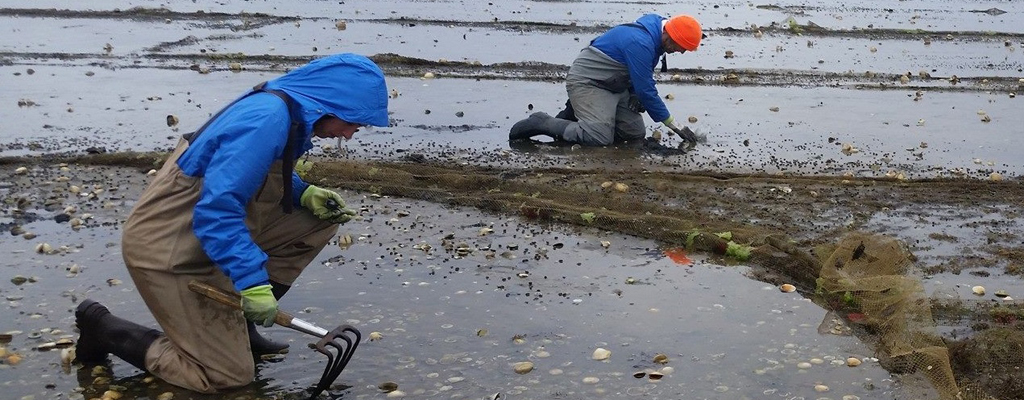Aiding the Management of Shellfish Diseases in Massachusetts

Diseases of oysters and quahogs are a significant ecological deterrent to successful aquaculture in Massachusetts and pose a significant economic threat to the state’s $28 million shellfish farming industry, its commercial growers, and the sustainable management of its public shellfisheries.
To help reduce the scope and impact of this issue, Woods Hole Sea Grant Extension Program (WHSGEP) conducts a number of programs to monitor for diseases in shellfish and respond to disease events. The WHSGEP initiated a disease research network (DRN) in 2012 to provide routine testing of oysters, which account for more than 90 percent of commercially farmed shellfish in Massachusetts. Through the DRN, oysters are collected from representative areas and tested, giving growers, natural resource managers, and shellfish constables information about which diseases are present and an idea of how disease prevalence and/or intensity is changing from year to year. This information enables town natural resource managers and shellfish growers to plan for future plantings and implement farm practices aimed at reducing disease impacts. For growers, this knowledge can make a significant difference in decisions such as when to market product, stocking densities, selection of future disease-resistant seed, etc.
When the region’s shellfish growers report unusual oyster and quahog die-off events, WHSGEP’s emergency response program conducts emergency disease testing and site visits with growers to assess these events. Through one such event affecting quahogs, WHSGEP began a program to annually monitor quahogs in that town for signs of disease, tracking its prevalence over time. Due to our early monitoring, we detected an emerging trend for a second disease in hard clams, which led to a new research collaboration with Roger Williams University and a recently funded grant from the Northeast Regional Aquaculture Center for more research on this disease.
Published October 2018
